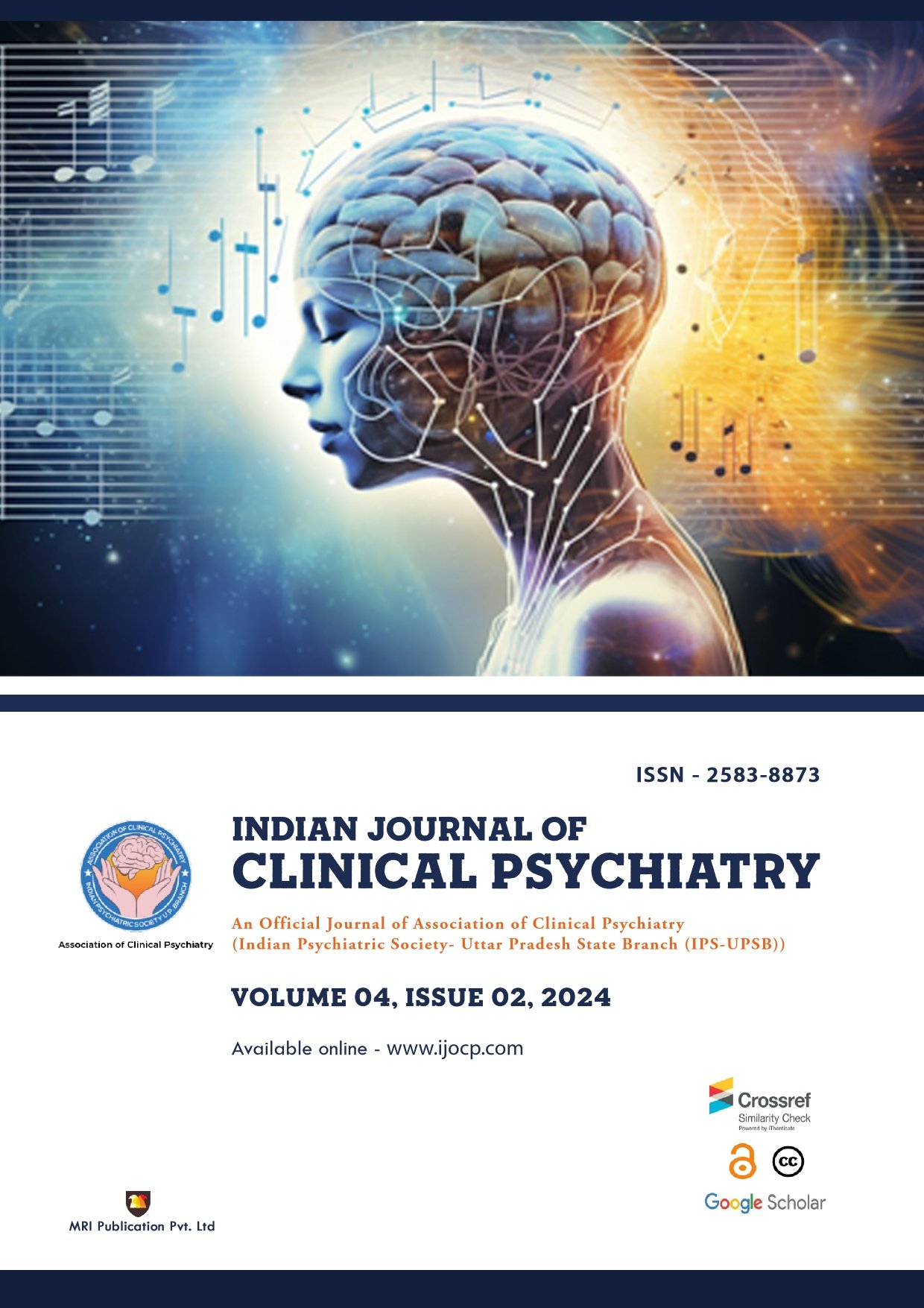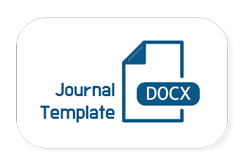Attitude and Knowledge of High School Students Towards Substance Abuse
Downloads
Published
Keywords:
High school students, substance abuse, knowledge and attitudes, risk awarenessDimensions Badge
Issue
Section
License
Copyright (c) 2025 Vangaveeti Sai Sobhana Sashank, Madhavi Kodali, Therissa Benerji

This work is licensed under a Creative Commons Attribution-NonCommercial-NoDerivatives 4.0 International License.
Background: Substance abuse is a major public health concern, especially among adolescents, who are vulnerable due to peer influence and risk-taking behaviors. While global studies exist, research on high school students’ attitudes and knowledge of substance abuse in southern India is limited. Thus, this study was taken up with the aim of assessing students’ awareness and attitudes toward substance abuse. Methods: A cross-sectional study was conducted among students aged 13–17 years from rural and urban areas of Krishna district, Andhra Pradesh, India. Stratified random sampling was used to select schools and participants from standards IX, X, XI, and XII. Data were collected using two validated questionnaires: Dr. Om Prakash’s ‘Knowledge and Attitude Addiction Questionnaire for Adolescents’ and CSR’s Evaluation Instrument for Knowledge on Effects of Alcohol, Tobacco, and Other Drugs. Data were analyzed using descriptive and inferential statistics, with a p-value of <0.05 considered statistically significant. Results: Of the 300 students, 61.3% were male, and 55.7% were from rural areas. Rural students exhibited better awareness of substance abuse risks, with 70.7% recognizing the dangers of chewing tobacco, compared to 55.1% in urban areas (p = 0.041). Females were more concerned about addiction (93.1% vs. 78.3%, p < 0.001). Family history of substance use influenced attitudes, and mass media was the primary source of information. Conclusion: The study highlighted the need for targeted, gender-sensitive interventions, with a focus on school-based programs and mass media, to address knowledge gaps and misconceptions about substance abuse among adolescents.Abstract
How to Cite
Downloads
Griffin JB JR. Substance Abuse. In: Walker HK, Hall WD, Hurst JW, editors. Clinical Methods: The History, Physical, and Laboratory Examinations. 3rd ed. Boston: Butterworths; 1990. GBD 2016 Alcohol and Drug Use Collaborators. The global burden of disease attributable to alcohol and drug use in 195 countries and territories, 1990-2016: a systematic analysis for the Global Burden of Disease Study 2016. Lancet Psychiatry. 2018;5(12):987-1012. Available from: doi.org/10.1016/S2215-0366(18)30337-7. Sivapuram MS, Nagarathna R, Anand A, Patil S, Singh A, Nagendra HR. Prevalence of alcohol and tobacco use in India and implications for COVID-19 - Niyantrita Madhumeha Bharata Study Projections. J Med Life. 2020;13(4):499-509. Available from: doi.org/10.25122/jml-2020-0079. UN Office of Drugs and Crime. UNODC World Drug Report 2021: pandemic effects ramp up drug risks, as youth underestimate cannabis dangers [Internet]. Vienna: UNODC; 2021 Jun 24 [cited 2021 Sep 6]. Available from: https://www.unodc.org/unodc/press/releases/2021/June/unodc-world-drug-report-2021_-pandemic-effects-ramp-up-drug-risks--as-youth-underestimate-cannabis-dangers.html Agardh EE, Danielsson AK, Ramstedt M, Holm AL, Diderichsen F, Juel K, et al. Alcohol-attributed disease burden in four Nordic countries: a comparison using the Global Burden of Disease, Injuries and Risk Factors 2013 Study. Addiction. 2016;111(10):1806-1813. Available from: doi.org/10.1111/add.13430. United Nations Office on Drugs and Crime. World Drug Report 2016. United Nations publication, Sales No. E.16.XI.7. Vienna: UNODC; 2016. Griffin KW, Botvin GJ, Nichols TR. Long-term follow-up effects of a school-based drug abuse prevention program on adolescent risky driving. Prev Sci. 2004;5(3):207-212. Available from: doi.org/10.1023/b:prev.0000037643.78420.74. Prakash O, Giri OP, Mishra AK, Kumar S, Kulhara P. Knowledge and attitude of Indian adolescents towards addiction: Findings from an exploratory survey. J Ment Health Hum Behav. 2009;14(2):74-79. Available from: https://ipsnz.org/wp-content/uploads/2019/10/original1-1-1.pdf. Tikoo VK, Dhawan A, Pattanayak RD, Chopra A. Assessment of Pattern and Profile of Substance Use among Children in India. National Commission for Protection of Child Rights (NCPCR) by National Drug Dependence Treatment Centre [NDDTC], All India Institute of Medical Sciences [AIIMS], New Delhi; 2013. Ellickson PL, McGuigan KA, Adams V, Bell RM, Hays RD. Teenagers and alcohol misuse in the United States: by any definition, it's a big problem. Addiction. 1996;91(10):1489-1503. Available from: doi.org/10.1046/j.1360-0443.1996.911014898.x. Squeglia LM, Jacobus J, Tapert SF. The influence of substance use on adolescent brain development. Clin EEG Neurosci. 2009;40(1):31-38. Available from: doi.org/10.1177/155005940904000110. Office of the Registrar General and Census Commissioner, India. Census of India 2011. New Delhi: Ministry of Home Affairs, Government of India; 2011. Planning Commission, Government of India. Report of the working group on adolescents for 11th Five Year Plan (2007–2012) [Internet]. New Delhi: Government of India; 2007 Mar [cited 2021 Sep 20]. Available from: http://planningcommission.nic.in/aboutus/committee/wrkgrp11/wg11_adoldev.pdf Stanhope M, Lancaster J. Public health nursing: population-centered health care in the community. 7th ed. St. Louis: Mosby Elsevier; 2015. Allott R, Paxton R, Leonard R. Drug education: a review of British Government policy and evidence on effectiveness. Health Educ Res. 1999;14(4):491-505. Available from: doi.org/10.1093/her/14.4.491. Mellanby AR, Rees JB, Tripp JH. Peer-led and adult-led school health education: a critical review of available comparative research. Health Educ Res. 2000;15(5):533-545. Available from: doi.org/10.1093/her/15.5.533. Fonseca K. “DRUGS ARE NOT COOL” – Biggest ‘Drug Free India’ campaign for youth launched [Internet]. Mumbai: Youth Incorporated Magazine; 2019 Feb 20 [cited 2021 Oct 7]. Available from: https://youthincmag.com/drug-free-india-campaign-for-youth-launched. Kalpana L, Kavya HG. Knowledge towards ATOD: a study. J Clin Diagn Res. 2012;6(1):38-41. Available from: https://jcdr.net/articles/PDF/2076/9%20-%203599.(A).pdf Tsering D, Pal R, Dasgupta A. Substance use among adolescent high school students in India: A survey of knowledge, attitude, and opinion. J Pharm Bioallied Sci. 2010;2(2):137-140. Available from: doi.org/10.4103/0975-7406.67005. Singh M, Bala N, Garg PD, Bansal S, Bumrah S, Attri A. Substance abuse in Children and adolescent: A Retrospective Study. Int J Med Res Rev 2017;5(3):352-356. Available from: doi.org/10.17511/ijmrr.2017.i03.22. World Health Organization. Fact sheet about alcohol [Internet]. Geneva: World Health Organization; 2018 [cited 2021 Oct 7]. Available from: https://www.who.int/news-room/fact-sheets/detail/alcohol. Gajalakshmi V, Asma S, Warren CW. Tobacco survey among youth in South India. Asian Pac J Cancer Prev. 2004;5(3):273-278. Available from: https://journal.waocp.org/article_24268_f6002cada80460e4a9796718611648c4.pdf
References
Most read articles by the same author(s)
- Madhavi Kodali, Therissa Benerji, Rashmitha Vetapalem, Varun Kumar Bandi, Krishna Mohan Parvathaneni, Perceived Stress and Quality of Sleep in Patients on Hemodialysis , Indian Journal of Clinical Psychiatry: Vol. 4 No. 02 (2024): Indian Journal of Clinical Psychiatry
Similar Articles
- Ankita Chattopadhyay, Gaurishanker Kaloiya, Siddharth Sarkar, Family Communication in the Context of Substance use: What do We Know and What Measures We can Take? , Indian Journal of Clinical Psychiatry: Vol. 2 No. 02 (2022): Indian Journal of Clinical Psychiatry
- Abhishek Mohanty, Vivek P Vajaratkar, Amit Dias, Prevalence of Body Dysmorphic Disorder in College- Going Students: A Quantitative Study , Indian Journal of Clinical Psychiatry: Vol. 4 No. 01 (2024): Indian Journal of Clinical Psychiatry
- Menon, Natarajan Varadharajan, Immune-inflammatory Pathways in Somatoform-Disorders : A Theoretical Update , Indian Journal of Clinical Psychiatry: Vol. 1 No. 1 (2021): Indian Journal of Clinical Psychiatry
- Riya Jain, Sayanti Paul, Arghya Pal, Prevalence of Premenstrual Syndrome in Undergraduate MBBS Students and their Work-related Quality of Life , Indian Journal of Clinical Psychiatry: Vol. 3 No. 01 (2023): Indian Journal of Clinical Psychiatry
- Kenil Jagani, Nidhi Doshi, Parag Shah, Psychosocial Factors Related to Attempted Suicide During COVID-19 Pandemic , Indian Journal of Clinical Psychiatry: Vol. 4 No. 01 (2024): Indian Journal of Clinical Psychiatry
- Niragh Sikdar, Prevalence of Impostor Syndrome: Associations with Personality Traits and Social Comparison Among Undergraduate Students of a Medical College of Kolkata , Indian Journal of Clinical Psychiatry: Vol. 5 No. 01 (2025): Indian Journal of Clinical Psychiatry
- Chittaranjan Andrade, A Potential Role for Statins in the Long-term Reduction in the Risk of Neurodegenerative Disease , Indian Journal of Clinical Psychiatry: Vol. 2 No. 02 (2022): Indian Journal of Clinical Psychiatry
- Pronob Kumar Dalal, Kopal Rohatgi, A Kaleidoscopic View of Substance Use in Uttar Pradesh , Indian Journal of Clinical Psychiatry: Vol. 1 No. 1 (2021): Indian Journal of Clinical Psychiatry
- Hardik V Patel, Sanjukta Ghosh, Bhaveshkumar M Lakdawala, Attitudes Towards the Mentally Ill: A Comparative Study Between Medical Officers and Nurses in the Ahmedabad City of Gujarat , Indian Journal of Clinical Psychiatry: Vol. 4 No. 01 (2024): Indian Journal of Clinical Psychiatry
- M L Charan, Krishan Kumar , S Novena, E V Johny, Mujiba Nazeer, Responding to Crisis: An Analysis of Psychological Reactions to the COVID-19 Pandemic through Web Survey , Indian Journal of Clinical Psychiatry: Vol. 3 No. 02 (2023): Indian Journal of Clinical Psychiatry
You may also start an advanced similarity search for this article.



